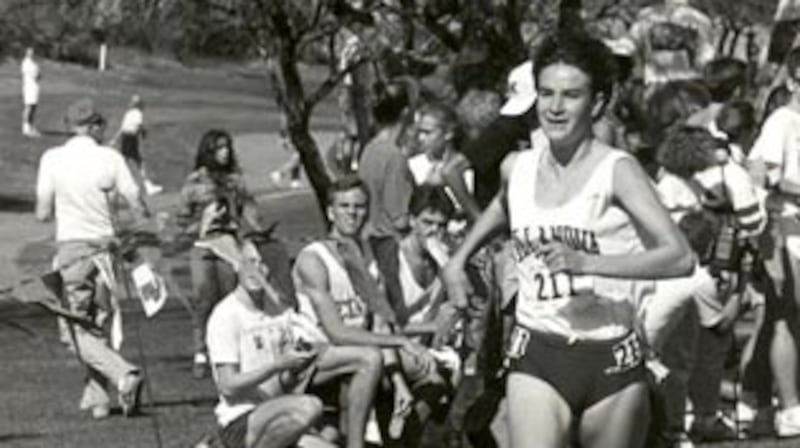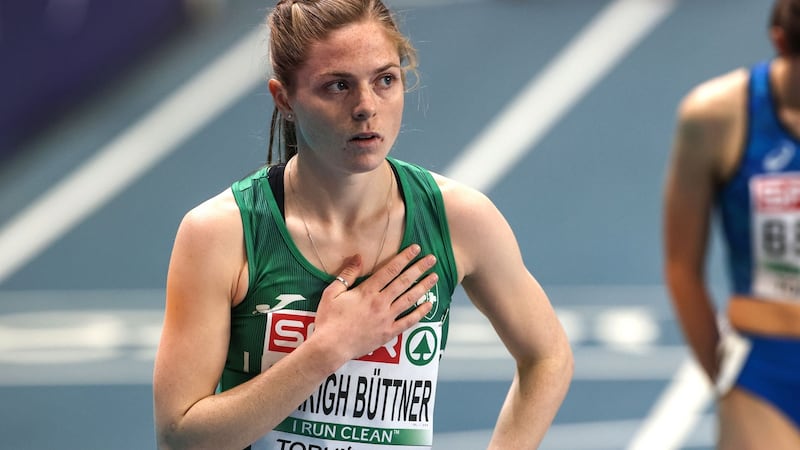Villanova station as I remember it was a small rickety building, where on arrival you had to walk down steps to go under the train tracks and out the other side, only now there’s a ramp to the tunnel, handy for the large wheelie bags, and a cafe in the old ticket office.
With buildings on both sides of the tracks, it gets more unrecognisable, and I was starting to wonder was this the same old route I'd taken countless times, across to the track office in the Jake Nevin Field House, on the way passing a large black and white picture of Ronnie Delany kneeling in prayer after winning the 1,500m at the Melbourne Olympics in 1956.
There are certain periods in life when you don’t always appreciate what you have until some years later, when you get some reminder or better still revisit what was once so integral and formative, and this time through more experienced eyes.
It’s been some years – 30, to be exact, since my final cross-country season at Villanova University, which culminated at the NCAA Championships in Arizona, Villanova winning the women’s team title for the third year in a row, and me defending the individual title.

Just one of the special memories I revisited last week on a trip back to Villanova, the small rural-like campus about 12 miles northwest of Philadelphia, including the trip I used to take to get there, particularly after the Christmas break when returning from Ireland.
It wasn’t such a straightforward trip then: landing in New York, as I did last week, navigating from JFK airport, well before the AirTrain opened in 2003, well before smartphones and Google maps too. I remember it involved walking quite a bit to find the bus to take you to Jamaica station, in Queens, to catch the subway to Manhattan, then traversing across a few streets and avenues to get to Penn Station, finding the Amtrak train to Philadelphia, before transferring onto another local train to Villanova.
Home
I’m still not quite sure how I did it. I also remember it being dark and lugging three of those big old sports bags (this being before the days of wheelie bags too) through the streets of New York, then when finally arriving at Villanova would find the station blanketed in snow as I headed on the final few hundred metres to my dormitory room on the main campus.
It’s strange the detail you remember at times like this, and even 30 years later I was reluctant to go the extra few hours in the dark, even with the added bonus of Google maps leading the way. I couldn’t get my head around how I found my way all those years ago. Maybe that was all part of the adventure.
Walking back through the campus also brought a real a sense of pride and appreciation of a place I once called home, and which remains such an influential period of my life and especially my running career,
Down through the years I've maintained a friendship with women's head coach Gina Procaccio, who also happened to host me when I first came to visit Villanova, back at Easter 1987. We were never on the same Villanova team, though we did travel and race together a few years later on the European circuit and the World Championships in 1993 and 1995.
Marcus O’Sullivan has been men’s head coach at Villanova since 1998, and we revisited plenty of the old times too. He’s lost none of his enthusiasm for coaching, to get the best of the athletes in what can sometimes be a tricky environment.
I always felt comfortable and at home when visiting the track office, and even if it has changed considerably over the years, the welcome was the same. Meeting some of the current Villanova runners also left me wondering if they truly appreciate all that they have and are given when living the life of a collegiate athlete.
The facilities are continually improving, helped by many donations from former students and athletes, all keen to give something to the place where they got such a start in life. In many ways college athletes these days have a better set up compared to what lies ahead when they might try to pursue a professional running career.
The hallowed halls are filled with framed photographs of previous NCAA Champions, in cross-country, indoor and outdoor track, reminders of what is expected at Villanova and also what is possible. One picture I always remember, as you walked to the top of the stairs in the field house to the old track offices that I once knew, was that of Ronnie, kneeling down in gracious thanks for what he had just achieved. I asked Gina was it still hanging on the wall. She laughed and said no, as if that was long gone. I wasn’t sure to believe her, nor did I want to go and find out.
A different angle
When you revisit your college days all these years later you see many things from a different angle, which you don’t always see at the time, and for me it was the opportunity to grow and develop in an environment that was the perfect stepping stone from junior to senior competition.

Villanova has always been a breeding ground for Irish athletes, and there are many still scattered across colleges all over the US, just not so many stand out names as in the past. Villanova is also where the Irish running scholarship trail all began, beginning with Jimmy Reardon after he competed in the 400m at the 1948 Olympics in London, joined by discus thrower Cummin Clancy and miler John Joe Barry.
It's been kept going in the seven uninterrupted decades since, including Noel Carroll and Frank Murphy in the 1960s, Donie Walsh and Eamonn Coghlan in the 1970s, Marcus and Gerry O'Reilly in the 1980s, more recently Tokyo Olympian Síofra Cléirigh Büttner and currently Charlie O'Donovan from Cork, now in his junior year and continuing the pipeline into the 2020s.
Still, even with all the technology and access to online information, you wonder is there a fear factor of stepping out into the unknown, the fear of change or of leaving behind the safety net. If anything, the knowledge and protection of the student athlete has never been greater, the coaches are more athlete-centred now and have more access to additional strength and conditioning and recovery tools. Not that the old ice-cold whirlpool has gone away or changed either.
Villanova brought back lots of special memories last week, and even if over the years you can lose touch, it’s easy to get reconnected once you revisit and see the dedication of the coaches to develop the athletes and help guide them on a successful path, not just in running but in life.
Maybe fewer Irish athletes aren’t willing or want to take the US route now, and there will always be challenges and obstacles to overcome when trying to progress to the international stage, which for me was all part of the adventure.












